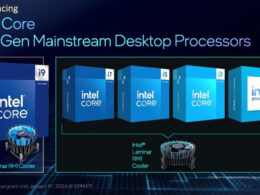Desktop motherboard manufacturers have shown interest in the new CAMM2 memory module format, initially designed for other purposes. Each vendor sees unique advantages in using the new memory format in desktop PCs, as reported by the portal PCWorld.
To clarify the terminology, the second version of the Compression Aided Memory Modules or CAMM standard, CAMM2, comes in two formats: a full-size rectangular version for use in data centers and other stationary equipment, and energy-efficient angular LPCAMM2 modules designed for laptops. The focus in this piece is on the CAMM2 module format, considered as an alternative and a potential full replacement for traditional U-DIMM modules currently used in desktop PC motherboards.

MSI’s CAMM2 Adoption
MSI unveiled a conceptual motherboard for Intel processors at Computex 2024, equipped with a CAMM2 memory module. In MSI’s view, CAMM2 memory enhances DDR5 RAM performance, reduces memory latency, and additionally, allows for space-saving on the motherboard. CAMM2 modules also simplify the installation of liquid cooling, making memory overclock feasible.
Asus and Space Efficiency
Conversely, Asus acknowledges no significant advantage of CAMM2 in terms of performance at the moment. However, as the format allows for more individual components to be included in a relatively small module, Asus is more interested in the space saved.
ASRock’s View on CAMM2
ASRock sees the advantage of CAMM2 memory modules in their compatibility and aesthetics. Traditional U-DIMM memory modules often interfere with the installation of high-performance CPU coolers. Thanks to their size and placement relative to the motherboard plane, CAMM2 modules lack this disadvantage. Interestingly, Asus concurs with this viewpoint.
Futuristic Desktop Systems
The use of the CAMM2 memory format expands opportunities to create even more compact desktop systems, where available space is quite limited. Who knows, perhaps the new memory format will find its application as part of Nvidia’s SFF-Ready initiative, offering the assembly of powerful gaming systems in compact computer cases in the future.





